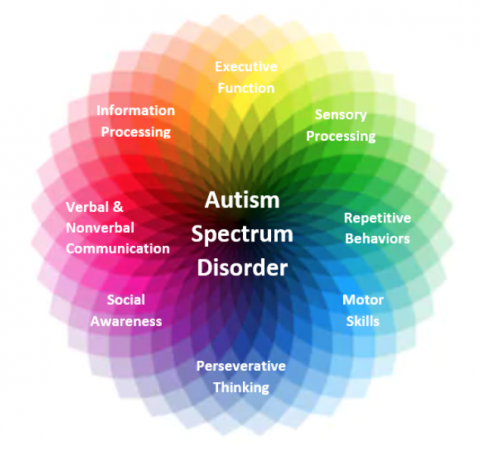Just How to Connect Properly with Enjoyed Ones on the Autism Range
Just How to Connect Properly with Enjoyed Ones on the Autism Range
Blog Article
Discovering Autism: Strategies for Effective Communication and Communication
Reliable interaction and communication with people on the autism range necessitate a comprehensive understanding of their one-of-a-kind needs and preferences. Techniques such as utilizing clear language, using aesthetic supports, and promoting regular regimens can substantially boost engagement and decrease stress and anxiety. Additionally, identifying the importance of non-verbal signs and shared passions leads the means for significant connections. The complexities of these techniques expose further factors to consider that merit exploration, specifically in just how they can be adapted to diverse contexts and individual experiences. What might these adjustments appear like in practice?
Understanding Autism Range Disorder
Autism Range Condition (ASD) incorporates a variety of neurodevelopmental conditions identified by challenges in social communication, communication, and recurring behaviors. The term "range" reflects the varied manifestations and differing levels of seriousness experienced by individuals with ASD. While some might display substantial impairments, others might show high-functioning traits, permitting better independence in day-to-day live.
The start of ASD normally occurs in very early childhood years, with signs commonly recognizable by age two. Early indications may include postponed speech growth, minimal eye contact, and problems in comprehending social signs. Although the accurate etiology of ASD stays vague, study suggests a combination of genetic and environmental elements plays a crucial role in its advancement.
As an outcome, interventions and support customized to individual demands are vital for promoting communication and social abilities. Acknowledging the complexity of ASD is crucial for promoting recognition, approval, and effective approaches that help with meaningful communications with individuals on the range.

Importance of Clear Interaction
Reliable interaction is important for fostering understanding and connection, particularly for people with Autism Range Condition (ASD) Clear communication not only promotes social communications yet likewise improves the individual's capacity to reveal their requirements, thoughts, and emotions. For individuals with ASD, the subtleties of language can often be testing; for that reason, using distinct and simple language is important.
Moreover, clear interaction helps in reducing disappointment and anxiety that might arise from misconceptions. When messages are conveyed in a direct and constant manner, people with ASD are better furnished to interpret details accurately, which can dramatically enhance their social involvement and participation in different settings.
Establishing regimens and using aesthetic assistances can further boost clear communication. These methods give individuals with foreseeable structures that aid comprehension and retention of details. Additionally, actively paying attention and being client throughout communications advertises an encouraging environment where individuals with ASD really feel valued and recognized.
Ultimately, prioritizing clear interaction not only encourages people with ASD but also promotes even more purposeful connections with their peers, caregivers, and the broader area, leading the way for inclusive communications and joint partnerships. - autism
Non-Verbal Interaction Methods
Interaction expands past words, and for people with Autism Range Disorder (ASD), non-verbal cues play a considerable function in interactions. Non-verbal communication methods can include facial expressions, motions, body language, and eye get in touch with, every one of which work as essential parts for sharing feelings and intentions.
Understanding and interpreting these non-verbal signals go to the website can enhance communications with people with ASD. A cozy smile or open stance can produce a welcoming atmosphere, encouraging involvement. In a similar way, making use of visual aids-- such as picture cards or signs-- can connect communication gaps and aid communicate messages a lot more effectively.
It is likewise essential to be mindful of personal area, as individuals with ASD might have different comfort degrees pertaining to distance. Observing their reactions to physical nearness can inform proper modifications.

Developing Helpful Environments
Developing an encouraging atmosphere is important for fostering favorable communications and enhancing the health of people with Autism Range Condition (ASD) Such atmospheres can considerably lower stress and anxiety and create a feeling of security, allowing individuals to express themselves extra easily.
To achieve this, it is crucial to think about sensory sensitivities that people with ASD may experience. Customizing the physical space to consist of soft lighting, marginal background sound, and comfortable seating can develop a calming environment. Furthermore, utilizing regular routines and clear aesthetic routines can aid people expect changes and lower unpredictability, further promoting comfort.
Social rooms need to be structured to reduce overwhelming stimuli while offering possibilities for interaction in preferred tasks. Helping with locations marked for quiet time can likewise work as a refuge during minutes of stress. Significantly, incorporating components of choice equips people, enabling them to work out agency in their atmosphere.

Encouraging Social Interactions
Fostering social communications among people with Autism Spectrum Condition (ASD) requires deliberate strategies that focus on convenience and interaction. Developing predictable regimens can help minimize anxiousness, making social settings extra approachable. Producing organized settings with defined duties and roles enables people to engage without the overwhelming stress of unstructured social characteristics.
Incorporating rate of interests and toughness into social activities can function as a catalyst for interaction. As an example, organizing team tasks around shared hobbies or topics of attraction can promote natural conversations and connections. Additionally, using visual assistances, such as social manuscripts or photographic timetables, can help in comprehending social signs and assumptions.
Designing appropriate social behaviors is vital - autism. Peers and grownups need to show reliable interaction strategies, consisting of energetic listening and turn-taking. Role-playing he has a good point circumstances can also supply a secure room for people to exercise these abilities
Last but not least, cultivating peer partnerships via comprehensive practices is vital. Motivating inclusive playdates or group outings can create opportunities for socializing in a comfy setup. By executing these instructors, caretakers original site and methods can substantially improve social interactions for individuals with ASD, promoting their total social growth and wellness.
Final Thought
In conclusion, efficient interaction and communication strategies are necessary for sustaining individuals with Autism Range Problem. Ultimately, these strategies encourage people with autism to navigate social landscapes, promoting their general wellness and making it possible for the development of lasting relationships.
Efficient interaction and communication with people on the autism range necessitate an extensive understanding of their special requirements and choices. Clear interaction not just promotes social interactions but also enhances the individual's ability to express their needs, thoughts, and emotions.Cultivating social communications among individuals with Autism Spectrum Disorder (ASD) requires willful approaches that focus on comfort and interaction. By carrying out these instructors, approaches and caretakers can dramatically improve social communications for people with ASD, promoting their total social advancement and well-being.
In conclusion, reliable communication and communication methods are necessary for supporting individuals with Autism Range Disorder.
Report this page